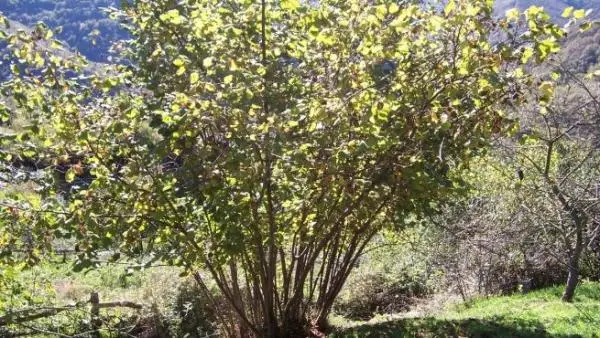The hazel is a tree belonging to the family of Betuláceas and gender Corylus, which compose about 15 species of shrubs and trees that originated in most temperate areas of the Northern Hemisphere. The most common species among gardening lovers are Corylus maxima, Corylus colurna and Corylus avellana, their fruits being very interesting: hazelnuts, which are used both for food and for making paintings and which are delicious.
They are specimens that do not usually exceed 6 meters in height and have deciduous leaves, with a round shape at the tip and with a serrated edge. Before they fall, they turn a very pretty yellow, and the tree produces male flowers about 3 inches long before the leaves begin to appear. The female flowers are bud-shaped, dark, and have reddish stigmas. It is a tree that can live for several centuries if the right conditions are met.
Hazelnut basic care
- Location: it needs to be in a very well lit place, ideally in full sun but it can also be developed in semi-shady areas.
- Temperature: cool temperatures are best for you, and it can even withstand cold and frost. However, very high temperatures are not highly recommended, at least not for many hours a day.
- Soil: the most suitable is the one that has a lot of humus and that is very well drained. The final planting should be done in autumn.
- Watering: it has to be abundant and frequent, so that the soil is always moist but does not get flooded. It is a tree that does not withstand drought, so pay close attention to this.
- Fertilizer: use a mineral fertilizer during flowering, when it begins to sprout and another in the middle of autumn, also adding organic fertilizer on that occasion, preferably manure.
- Pruning: only training is necessary in the first two years of life.
- Multiplication: it is done by seeds, by layering during the spring or from grafts.

